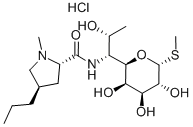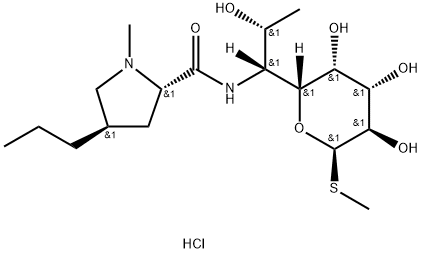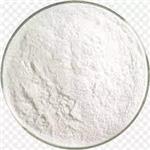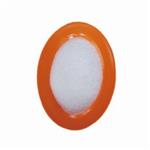
Lincomycin
- Product NameLincomycin
- CAS154-21-2
- CBNumberCB3492619
- MFC18H34N2O6S
- MW406.54
- EINECS205-824-6
- MDL NumberMFCD00135816
- MOL File154-21-2.mol
Chemical Properties
| Melting point | 148-150°C |
| Boiling point | 646.8±55.0 °C(Predicted) |
| Density | 1.1704 (rough estimate) |
| refractive index | 1.6510 (estimate) |
| storage temp. | Hygroscopic, -20°C Freezer, Under inert atmosphere |
| solubility | Aqueous Acid (Slightly), DMSO (Slightly), Methanol (Slightly), Water |
| pka | 7.6(at 25℃) |
| form | Solid |
| color | White to Off-White |
| Stability | Hygroscopic |
| FDA 21 CFR | 556.360; 558.325; 558.4 |
| FDA UNII | BOD072YW0F |
| ATC code | J01FF02 |
| NIST Chemistry Reference | Lincomycin(154-21-2) |
| EPA Substance Registry System | Lincomycin (154-21-2) |
Safety
| Symbol(GHS) |

|
| Signal word | Warning |
| Hazard statements | H315-H335-H319 |
| Precautionary statements | P264-P280-P302+P352-P321-P332+P313-P362-P264-P280-P305+P351+P338-P337+P313P |
| Hazardous Substances Data | 154-21-2(Hazardous Substances Data) |
| Toxicity | LD50 oral in rat: 1gm/kg |



